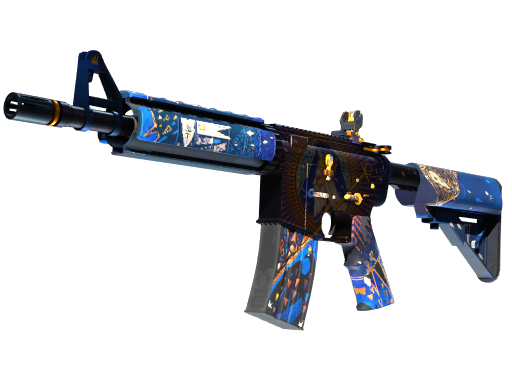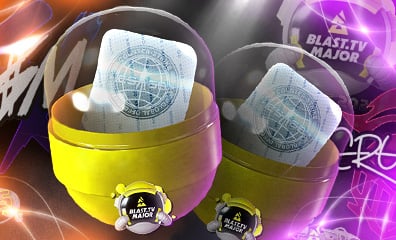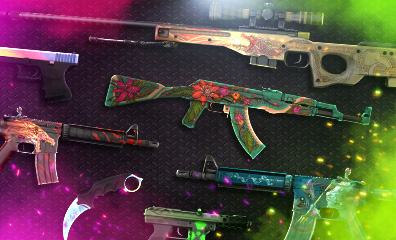The History & Evolution of the Counter-Strike (CS2/CS:GO) Skin Market
In the past decade, the Counter-Strike (CS2/CS:GO) skin market has emerged as a captivating phenomenon, transforming the way players engage with in-game aesthetics. Virtual weapon skins in Counter-Strike 2 have evolved from mere cosmetics to coveted commodities. This article delves into the dynamic interplay between economics, player culture, and the ever-changing gaming industry in the evolution of CS2/CS:GO skins.
What is CS2/CS:GO & Its Popularity?
Counter-Strike, developed by Valve Corporation and Hidden Path Entertainment, is a highly popular first-person shooter game known for its intense and competitive gameplay. One of the key factors contributing to CS’s popularity is its vibrant esports scene. The game has become a staple in professional gaming tournaments worldwide. With its dedicated players base and high-profile competitions like the ESL Pro League and the Valve-sponsored Majors, Counter-Strike has created a platform for aspiring gamers to showcase their skills and compete for substantial prize pools. CS’s popularity can be attributed to its constant updates and community involvement. Valve actively listens to player feedback and regularly releases patches and content updates to enhance the gaming experience. This commitment to maintaining a balanced and engaging gameplay environment has earned the trust and loyalty of the CS community. As the game continues to evolve and attract new players, CS’s place in the gaming landscape seems secure for years to come.
Definition of Counter-Strike (CS2/CS:GO) Skin Market
The skin market in the gaming industry has gained significant popularity. Skins are cosmetic items that alter the appearance of in-game elements. Players buy, sell, and trade these virtual items. Skins enhance the visual appeal and allow personal style expression. Rarity and uniqueness drive the market. Some skins are highly valuable due to limited editions, special effects, or associations with renowned players or events. The skin market operates through platforms and websites, facilitating sales and trades. Real-money transactions are available on some platforms, but not universally supported. The skin market has impacted the gaming industry, fostering communities and opportunities. Controversies exist around underage gambling and fraud. In conclusion, the skin market shapes gaming, enhancing visuals and providing customization options.

Early Days of Counter-Strike (CS2/CS:GO) Skins
The introduction of CS2/CS:GO skins in 2013 had a profound impact on the gaming industry. These virtual cosmetic items revolutionized the way players engaged with the game by allowing them to customize their weapons and express their individuality. Skins quickly gained popularity, creating a market where players could buy, sell, and trade them, driven by the allure of rarity and exclusivity. The rise of skin trading websites further fueled this market, enabling players to monetize their in-game possessions. Despite challenges such as scams and controversies, Valve Corporation implemented measures to regulate the market and ensure its legitimacy. CS2/CS:GO skins became an integral part of the game’s culture, fostering a vibrant economy and connecting players worldwide. The early days of CS2/CS:GO skins laid the groundwork for the dynamic and ever-evolving skin market we witness today, greatly enhancing the gaming experience for players across the globe.
Initial Skins and Their Rarity
The introduction of CS2/CS:GO skins revolutionized the game, offering players a personalized experience. Rarity played a significant role, with highly coveted skins symbolizing accomplishment and status. The thriving secondary market enabled players to buy, sell, and trade CS2 skins, adding depth to the game and driving the pursuit of unique cosmetic items. Overall, the initial skins and their rarity enhanced the Counter-Strike gaming experience worldwide.
Rarity as a Driving Force for the Skin Market
Rarity is vital in the thriving Counter-Strike (CS2/CS:GO) skin market, shaping player behavior and aspirations. Rare skins, obtained through scarcity and unique qualities, hold immense allure. They make players stand out, symbolize status, and create a vibrant secondary market with escalating values. The pursuit of rare skins adds excitement, prompting gameplay engagement. However, controversies surrounding scams and gambling have prompted developers to regulate the market. In conclusion, rarity drives the Counter-Strike (CS2/CS:GO) skin market, fueling players’ desire for exclusive cosmetics and shaping the future of gaming.
The Rise of the Counter-Strike (CS2/CS:GO) Skin Market
The Counter-Strike (CS2/CS:GO) skin market has surged, revolutionizing gaming and captivating players worldwide. Skins allow personalized expression and uniqueness. Rarity drives demand, creating exclusivity and a thriving secondary market. Challenges like scams and fraud prompt safer measures. Despite obstacles, the skin market flourishes, becoming integral to gaming culture. Investors recognize its potential for lucrative growth. Customization, rarity, and a vibrant secondary market have propelled the industry to new heights. The future holds promise with continued growth and innovation in the CS2/CS:GO skin market.
Controversies and Issues
The CS2/CS:GO skin market, a thriving sector in the gaming industry, has faced various controversies and challenges. While skins have brought excitement and personalization to the game, they have also given rise to concerns.
One significant controversy is the prevalence of scams and fraudulent activities within the Counter-Strike (CS2/CS:GO) skin market. Dishonest individuals take advantage of its popularity, deceiving players into fraudulent transactions and employing deceptive tactics to obtain valuable skins. These practices not only result in financial losses for unsuspecting players but also damage the overall reputation of the skin market.
Another issue that has plagued the CS2/CS:GO skin market is underage gambling. Certain third-party websites enable players, including minors, to use skins as virtual currency for gambling, including casino games and sports betting. This raises ethical and legal concerns as it involves minors engaging in gambling-like activities without appropriate age verification protocols.
To address these controversies and issues, game developers and platform operators have implemented measures. They have introduced stricter policies and enhanced security measures to combat scams and fraud. Collaborations with regulatory bodies and law enforcement agencies have also been established to crackdown on underage gambling and enforce legal compliance.
Current State of the Counter-Strike (CS2/CS:GO) Skin Market
The gaming skin market has experienced remarkable growth, becoming highly popular worldwide due to the appeal of enhancing in-game appearances.
The market’s expansion has led to billions of dollars in annual transactions, driven by factors such as esports, social media, and the growing demand for personalized gaming experiences. The introduction of trading platforms has created a thriving secondary market, enabling convenient and secure buying, selling, and trading of skins.
However, the industry has faced challenges with scams and fraud, which have negatively impacted its reputation. To counter these issues, increased regulation has been implemented to ensure a safer and more transparent trading environment.
The future of the skin market looks promising as the demand for skin continues to grow. Developers are exploring innovative features like limited editions, brand collaborations, and integration with blockchain technology.
In conclusion, the skin market’s impressive growth and value cater to players’ desire for customization. The industry is actively evolving to overcome challenges and provide an engaging environment for skin enthusiasts.
Wrapping Up!
The CS2/CS:GO skin market has transformed the gaming industry by providing customized experiences and fostering a prosperous economy. Skins offer personalization and allow players to express their individuality. The appeal of rarity drives its popularity, resulting in a dynamic market for buying, selling, and trading. Valve has implemented regulations to ensure market integrity. Rarity influences player behavior and fuels a secondary market with increasing values. Despite challenges, the skin market thrives and becomes an integral part of gaming culture. The future appears promising with ongoing growth and innovation. Demand continues to rise, prompting the exploration of features like limited editions and integration with blockchain technology. The CS2/CS:GO skin market enriches the gaming experience and shapes the future of the industry.
Read our blog for more interesting guides.
When were skins introduced in CS2/CS:GO?
The Arms Deal update, released on August 13, 2013, marked the introduction of skins in CS2/CS:GO. This update brought cosmetic weapon finishes into the game, allowing players to acquire them through in-game drops or by purchasing them from the Steam Community Market.
How big is the CS2/CS:GO skin industry?
The CS2/CS:GO skin industry has a significant market size and is considered substantial. Its annual worth is estimated to be in the billions of dollars, fueled by the global demand for cosmetic skins and the active buying and selling of these items by players. As the industry continues to grow and increase in value, it remains a profitable sector within the gaming market.
How has the CS2/CS:GO skin market evolved over time?
The CS2/CS:GO skin market has undergone a remarkable evolution over the years, growing from a basic cosmetic feature to a lucrative industry valued in billions of dollars. This transformation is evident through the introduction of trading platforms and marketplaces, providing players with a dynamic environment for buying, selling, and trading skins. Various factors, including the allure of customization, the scarcity of specific skins, and the integration of innovative technologies like blockchain, have contributed to the market’s expansion and success.
What is the future of the Counter-Strike (CS2/CS:GO) skin market?
The Counter-Strike (CS2/CS:GO) skin market holds a promising future, with ongoing expansion and innovation anticipated. As players increasingly desire personalized gaming experiences, the demand for skins is predicted to rise. Developers and marketplaces are actively pursuing new avenues, including limited-edition offerings and integration with emerging technologies like blockchain, to enrich the market’s attractiveness and offer captivating prospects for skin enthusiasts.
Share to:






